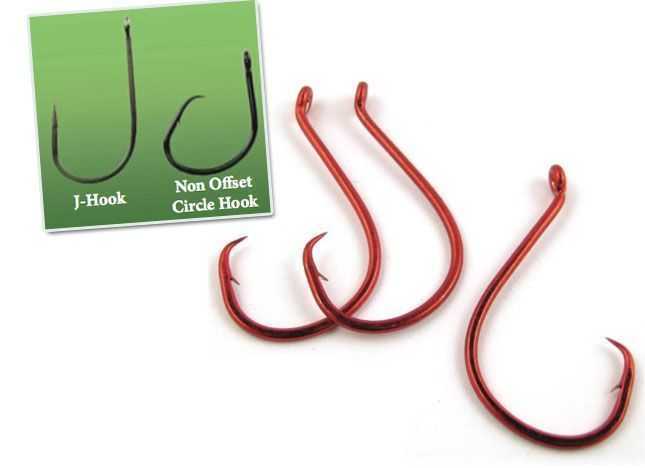The fundamental design of a circle hook is where the point shank of the hook points inward toward the hook shank. A 33-degree minimum is required for this measurement.
The hook must also be a non-offset hook. This unique shape allows the fish to eat and swim with the bait so that when the drag is engaged and the hook is set, it will not gut hook or throat hook the fish. The line will tighten, therefore pulling the hook through the mouth of the fish until the eye of the hook is outside the fish’s mouth. The hook then twists, pulling the shank towards the back of the fish and the hook catches in the corner of the mouth thus resulting in fewer gut-hooked fish while greatly lowering the mortality rate for released fish.
It is important not to strike when setting the hook, but rather just reel in steadily to set the hook. Striking or jerking while using a circle hook will often result in the hook being pulled out of the fish all together. When engaging a fish with a circle hook, it helps to point your rod tip low and in the opposite direction of which the fish is swimming with your bait. Using a circle hook will increase your hookup ratio, the fish will be more active on the line, and there will be less blood from the fight.
Circle hooks can be used to catch all species of fish on hook and line. They are primarily used with live or dead bait. When baiting your hook, be sure to keep the hook exposed and do not bury the hook point into the bait, this will prevent it from catching the fish’s mouth. Another common mistake that anglers make with circle hooks, is using too big of a hook for the species they are trying to catch.
